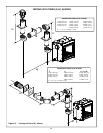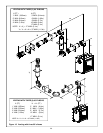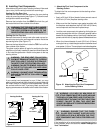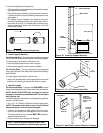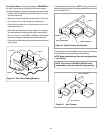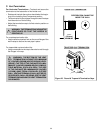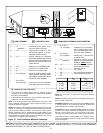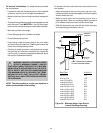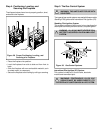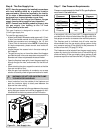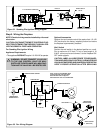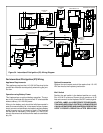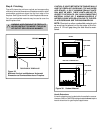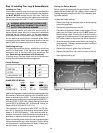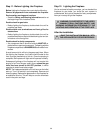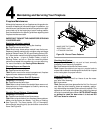
37
Step 9. Finishing
Figure 35 shows the minimum vertical and corresponding
maximum horizontal dimensions of fireplace mantels or other
combustible projections above the top front edge of the
fireplace. See Figures 4 and 5 for other fireplace clearances.
Only non-combustible materials may be used to cover the
black fireplace front.
WARNING: WHEN FINISHING THE FIREPLACE,
NEVER OBSTRUCT OR MODIFY THE AIR IN-
LET/OUTLET GRILLES IN ANY MANNER.
!
Figure 35.
Minimum Vertical and Maximum Horizontal
Dimensions of Combustibles above Fireplace
CAUTION: IF JOINTS BETWEEN THE FINISHED WALLS
AND THE FIREPLACE SURROUND (TOP AND SIDES)
ARE SEALED, A 300°
F. MINIMUM SEALANT MATE-
RIAL MUST BE USED. THESE JOINTS ARE NOT RE-
QUIRED TO BE SEALED. ONLY NON-COMBUSTIBLE
MATERIAL (USING 300° F. MINIMUM ADHESIVE, IF
NEEDED) CAN BE APPLIED AS FACING TO THE FIRE-
PLACE SURROUND. SEE THE DIAGRAM BELOW.
NOTE: Sheetrock or other combustible material such
as wood can be placed on the top edge of the fire-
place. A 1/2-inch gap along the side must be main-
tained.
Hearth Extensions
A hearth extension may be desirable for aesthetic reasons.
However, ANSI or CAN/CGA testing standards do not require
hearth extensions for gas fireplace appliances.
Figure 36. Sealant Material
ST-TRC
TOP EDGE
SIDE EDGE
PIER-TRC & CORNER-TRC
TOP EDGE
SIDE EDGE
1/2" GAP
1/2" GAP
TOP EDGE OF FIREPLACE
1/2"
12"
CEILING
31”



